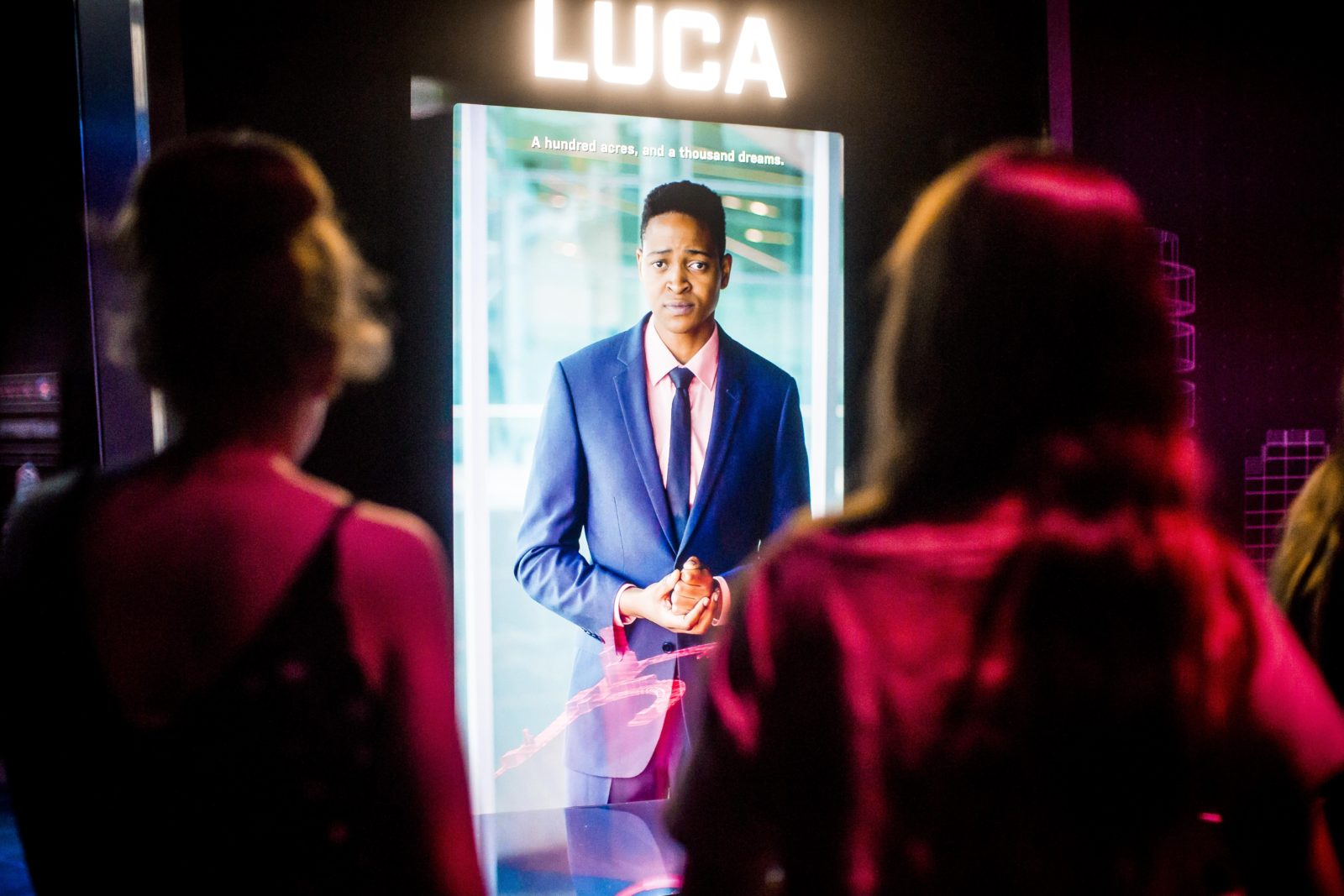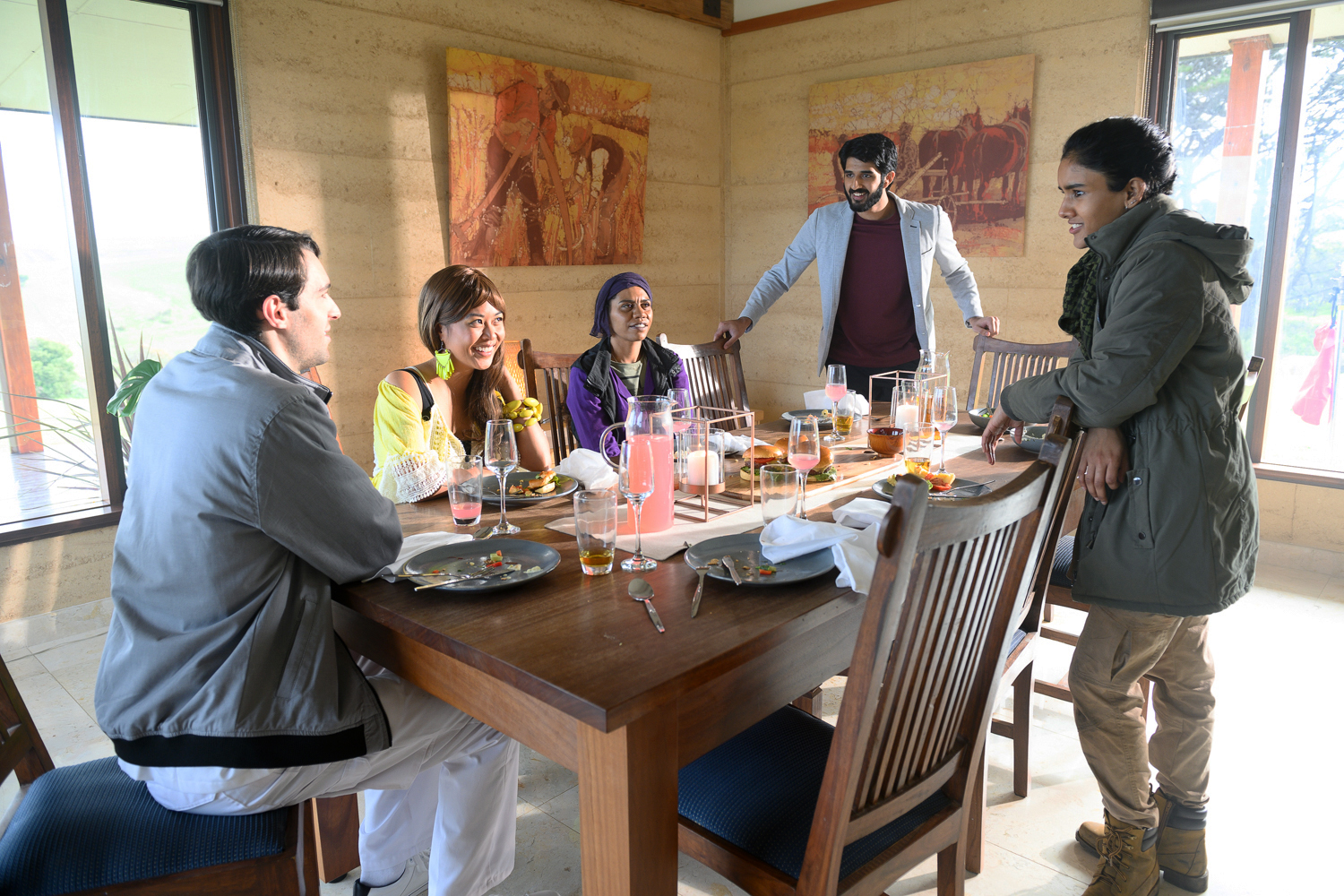Posted 12 Nov

When you create an exhibition set thirty years in the future, there are significant considerations when it comes to expressions of identity and diversity. We wanted to think about how society could change with regards to our understanding of gender and sexuality, and we also wanted to consider what disability might look like in the future.
In the last ten years there has been a shift in the way people are viewing gender and sexuality, it’s seen as more fluid over the course of our lives. In SEVEN SIBLINGS, we wanted to imagine more widespread changes to the way that we perceive gender. We use they/them pronouns when referring to all the siblings as a way to reflect this, anticipating that as time passes, the way that societally we understand gender will continue to change. Already in 2020, our visitors have responded in a positive way to this representation. This was first reported in user testing but continued through responses to our visitor survey, with visitors sharing how happy they were to see themselves and their friends reflected in the exhibition.
When we began our adaptation of the exhibition, Kai’s dating show was one of our thorniest problems to solve. Here we are, creating a future world and yet there persists the probably outdated early 21st century concept of a heterosexual dating show! We talked about removing the segment, but we also wanted to stay true to the exhibits within the original Heureka exhibition. It wasn’t an easy decision and it involved many discussions amongst ourselves and with trusted advisers. We eventually decided to leave the interactive in, but added an advisory note at the beginning (relationships come in shapes and sizes that are not depicted in this show) and also added an opening credits montage that showed some other more diverse couples dating, including Luca and their partner Noah. Visitor feedback suggests the advisory is appreciated and that many people then enjoy the set-up for the rest of the interactive. Regardless of how it fits in 2050, the kitschy dating show and Kai’s poetry is definitely a highlight for many.
In addition to depicting diversity in terms of gender and sexuality, we were very aware that none of the siblings have a visible disability. With research indicating that many disabilities are invisible, this prompted questions about how disability will be understood in thirty years. With technology and healthcare interventions that may be possible, it’s more likely that a person in 2050 would have an invisible disability. With mental illness a growing issue for young people, it is not surprising that one of our siblings might be managing their health in 2050.
Rowan talks to their biosensor during the interactive, so we deliberately explored how a biosensor could be therapeutic for managing anxiety. The narrative is specific to show that Rowan has programmed this sensor to track their heart rate and suggest ways to calm down if they start to experience a panic attack or other symptoms of anxiety. Other siblings may also be managing a range of temporary and permanent disabilities but our audience and us won’t know – which is the reality for many people now and in 2050. This is why one of our design principles is to be “Accessible and Inclusive” so that our experiences work for many regardless of assumptions.

There’s no such thing as one perfect vision of the future for all people. Even amongst the exhibition team, there are some elements that we all love, and some we love to disagree on. But that’s the story of SEVEN SIBLINGS FROM THE FUTURE, and that’s a realistic vision of our shared future: it’s messy! You need all sorts of people, with all sorts of values, to make a strong future city. I think in the case of creating Eucalara from the original Finnish version, we’ve created a place that’s pretty great and that strives for a place that is sustainable, equitable, ethical and prosperous. We’ve managed to capture the research for where technology, environment and social change might be heading in Australia, but we’ve definitely put our own MOD. spin on this possible future.
Since launching SEVEN SIBLINGS in November 2019, our real world has changed a lot. There are lots of elements of the exhibition — like Julia’s bushfire refuge and Alex’s telemedical training — that appeared in our lives much sooner than we imagined and we are grateful for the conversations we had with you about climate change, pandemics and what’s next. We don’t know what 2050 will look like or what the real future will hold, but we hope that you got a chance to explore our vision of it, and we hope that it can spark a conversation, an idea, or something to keep in mind while we travel there together.